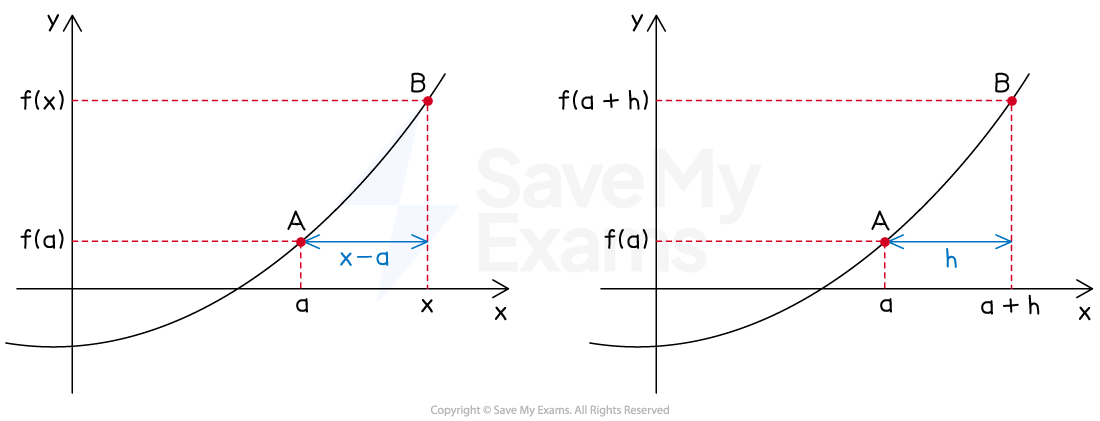Instantaneous Rate of Change (College Board AP® Calculus BC): Study Guide
Instantaneous rate of change
What is the instantaneous rate of change?
The instantaneous rate of change is the slope of a graph at a specific point, rather than between two points
Consider the graph of a function
with two points on the graph,
and

Using the labeling on the left,
the average rate of change from
to
can be written as
Using the labeling on the right,
the average rate of change from
to
can be written as
To find the instantaneous rate of change, consider finding the slope between
and
as point
moves closer to point
As the distance between the two points becomes smaller, the slope will become a more accurate estimate for the instantaneous rate of change at
Therefore the instantaneous rate of change will be the limit as this distance tends to zero
The instantaneous rate of change at
can be written as
or
These only give a valid answer if the relevant limit exists
They are both equivalent forms of the definition of the derivative of the function at
, denoted by
Worked Example
A function is defined by
.
Using the equation below, find the instantaneous rate of change of at the point where
.
Answer:
Substitute into the given formula
Evaluate the function, , at
and
Expand and simplify the numerator
Simplify the fraction by cancelling terms
Evaluate the limit

Unlock more, it's free!
Did this page help you?